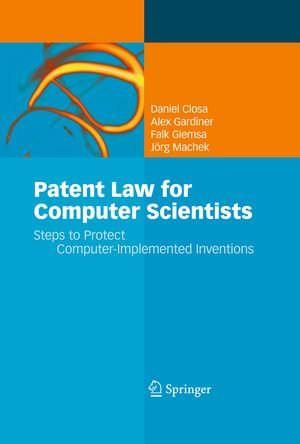
eTEXT
Patent Law for Computer Scientists
Steps to Protect Computer-Implemented Inventions
By: Daniel Closa, Alex Gardiner, Falk Giemsa, Jörg Machek
eText | 3 February 2010
At a Glance
eText
$84.99
or
Instant online reading in your Booktopia eTextbook Library *
Read online on
Desktop
Tablet
Mobile
Not downloadable to your eReader or an app
Why choose an eTextbook?
Instant Access *
Purchase and read your book immediately
Read Aloud
Listen and follow along as Bookshelf reads to you
Study Tools
Built-in study tools like highlights and more
* eTextbooks are not downloadable to your eReader or an app and can be accessed via web browsers only. You must be connected to the internet and have no technical issues with your device or browser that could prevent the eTextbook from operating.
ISBN: 9783642050787
ISBN-10: 3642050786
Published: 3rd February 2010
Format: ePUB
Language: English
Publisher: Springer Nature
You Can Find This eBook In
This product is categorised by
- Non-FictionBusiness & Management
- Non-FictionEconomics
- Non-FictionComputing & I.T.Computer Science
- Non-FictionComputing & I.T.Information Technology General IssueEthical & Social Aspects of IT
- Non-FictionLawLaws of Specific JurisdictionsCompany LawCommercial Law
- Non-FictionComputing & I.T.Information Technology General IssueLegal Aspects of IT
- Non-FictionLawInternational LawPublic International LawInternational Economic & Trade Law
- Non-FictionLawLaws of Specific JurisdictionsIT & Communications Law
- Non-FictionLawJurisprudence & General Issues
- Non-FictionLawLaws of Specific Jurisdictions
- Economics, Finance, Business and Management
























